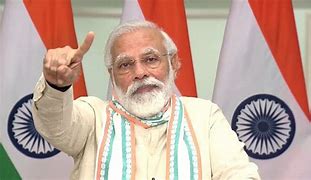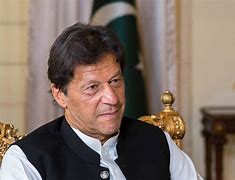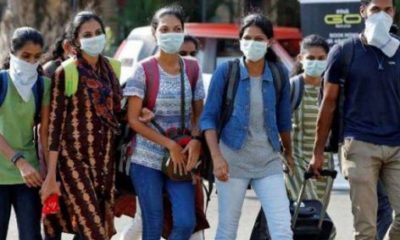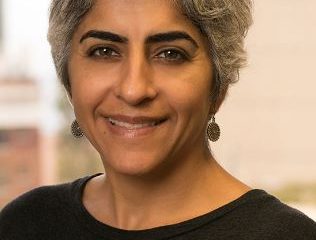Feature
David Headley confesses Pakistan’s ISI, Hafiz Saeed role in 26/11 Mumbai attacks

New Delhi: In a video conferencing from an undisclosed place in the United States, Pakistani-American convict in Mumbai terror attacks, David Coleman Headley, who deposed himself before the Mumbai Court, revealed that Pakistani intelligence ISI and Lashkar-e-Taiba planned the deadly 26/11 attacks in Mumbai.
Headley confessed that 26/11 attacks were launched on the direction of Jamaat-ud-Dawa Hafiz Saeed.
He added that he was born on June 30, 1960 in the US and shifted to Pakistan later where his name was Daood Sayeed Gilani.
Headley, 54, provided details of his passport and his seven-eight trips to Mumbai and one to New Delhi between 2006-2008 before the 26/11 attacks, including seven via Pakistan, one via UAE, and another trip to Mumbai in July 2009, after the terror attacks were executed.
Within a couple of hours, Nikam had posed around five dozen questions where Headley also revealed that most of the information on his visa application was false so that he would not blow his cover.
Admitting he was a LeT operative, Headley name one Sajid Mir as his main contact in the terror group.
“This is the first time that a terrorist is deposing and tendering evidence live in a foreign country. He will divulge the largers aspects of the 26/11 terror conspiracy, the people behind it and related aspects,” SPP Nikam said on the eve of the trial.
Headley’s ongoing evidence could help the prosecution nail the alleged co-conspirators in the attacks Zakiur Rehman Lakshi, the terrorists’ handlers, the role and involvement of other state and non-state actors, the role of another arrested LeT activist Sayed Zabiuddin Ansari alias Abu Jundal, currently in a Mumbai jail.
At the previous hearing on December 10 last year, a special judge had pardoned Headley and made him an approver in the case subject to certain conditions.
Headley, a man with American-Pakistani origins, was asked by Judge Sanap to disclose all information pertaining to the 26/11 case which he had earlier shared with the US courts.
This could shed light on the 26/11 conspiracy and the role of various terror groups, and other crucial details of the terror strike at multiple locations which left 166 dead on November 26-28, 2008.
Headley had already confessed to his role in the offences in the US for which he is seving a 35-year sentence.
He said that two earlier attempts to attack Mumbai failed, in September and October 2008.
Headley also said that Dr Tahawwur Hussain Rana assited me to get Indian visa. I met him in a military school in Punjab province. Dr Tahawwur Hussain Rana was my schoolmate for 5 years. After school, Rana became a doctor in Pakistan Army in Rawalpindi.
Entertainment
Meghalaya Reserves Legalized Gambling and Sports Betting for Tourists

The State Scores Extra High on Gaming-Friendly Industry Index
Meghalaya scored 92.85 out of 100 possible points in a Gaming Industry Index and proved to be India’s most gaming-friendly state following its recent profound legislation changes over the field allowing land-based and online gaming, including games of chance, under a licensing regime.
The index by the UK India Business Council (UKIBC) uses a scale of 0 to 100 to measure the level of legalisation on gambling and betting achieved by a state based on the scores over a set of seven different games – lottery, horse racing, betting on sports, poker, rummy, casino and fantasy sports
Starting from February last year, Meghalaya became the third state in India’s northeast to legalise gambling and betting after Sikkim and Nagaland. After consultations with the UKIBC, the state proceeded with the adoption of the Meghalaya Regulation of Gaming Act, 2021 and the nullification of the Meghalaya Prevention of Gambling Act, 1970. Subsequently in December, the Meghalaya Regulation of Gaming Rules, 2021 were notified and came into force.
All for the Tourists
The move to legalise and license various forms of offline and online betting and gambling in Meghalaya is aimed at boosting tourism and creating jobs, and altogether raising taxation revenues for the northeastern state. At the same time, the opportunities to bet and gamble legally will be reserved only for tourists and visitors.
“We came out with a Gaming Act and subsequently framed the Regulation of Gaming Rules, 2021. The government will accordingly issue licenses to operate games of skill and chance, both online and offline,” said James P. K. Sangma, Meghalaya State Law and Taxation Minister speaking in the capital city of Shillong. “But the legalized gambling and gaming will only be for tourists and not residents of Meghalaya,” he continued.
To be allowed to play, tourists and people visiting the state for work or business purposes will have to prove their non-resident status by presenting appropriate documents, in a process similar to a bank KYC (Know Your Customer) procedure.
Meghalaya Reaches Out to a Vast Market
With 140 millions of people in India estimated to bet regularly on sports, and a total of 370 million desi bettors around prominent sporting events, as per data from one of the latest reports by Esse N Videri, Meghalaya is set to reach out and take a piece of a vast market.
Estimates on the financial value of India’s sports betting market, combined across all types of offline channels and online sports and cricket predictions and betting platforms, speak about amounts between $130 and $150 billion (roughly between ₹9.7 and ₹11.5 lakh crore).
Andhra Pradesh, Telangana and Delhi are shown to deliver the highest number of bettors and Meghalaya can count on substantial tourists flow from their betting circles. The sports betting communities of Karnataka, Maharashtra, Uttar Pradesh and Haryana are also not to be underestimated.
Among the sports, cricket is most popular, registering 68 percent of the total bet count analyzed by Esse N Videri. Football takes second position with 11 percent of the bets, followed by betting on FIFA at 7 percent and on eCricket at 5 percent. The last position in the Top 5 of popular sports for betting in India is taken by tennis with 3 percent of the bet count.
Local Citizens will Still have Their Teer Betting
Meghalaya residents will still be permitted to participate in teer betting over arrow-shooting results. Teer is a traditional method of gambling, somewhat similar to a lottery draw, and held under the rules of the Meghalaya Regulation of the Game of Arrow Shooting and the Sale of Teer Tickets Act, 2018.
Teer includes bettors wagering on the number of arrows that reach the target which is placed about 50 meters away from a team of 20 archers positioned in a semicircle.
The archers shoot volleys of arrows at the target for ten minutes, and players place their bets choosing a number between 0 and 99 trying to guess the last two digits of the number of arrows that successfully pierce the target.
If, for example, the number of hits is 256, anyone who has bet on 56 wins an amount eight times bigger than their wager.























